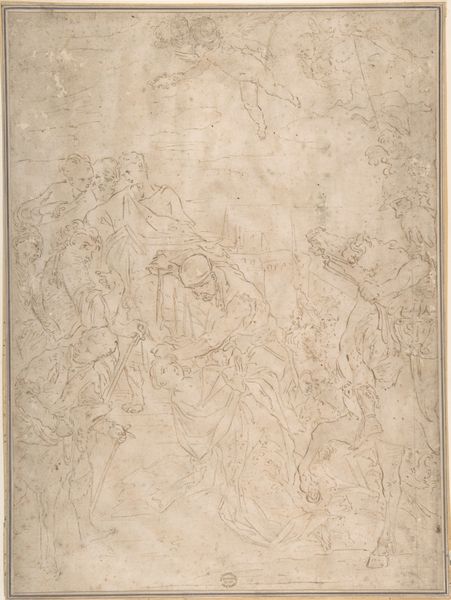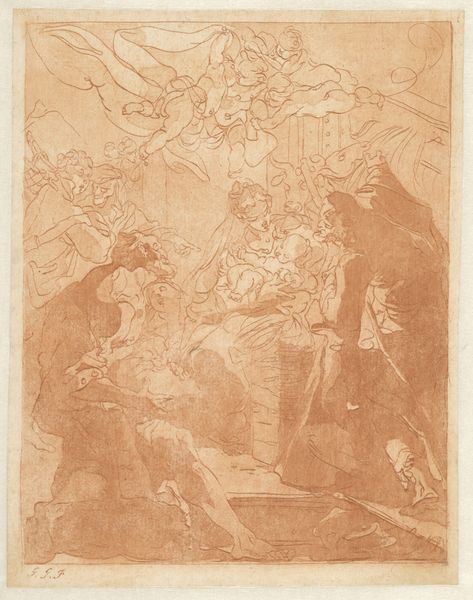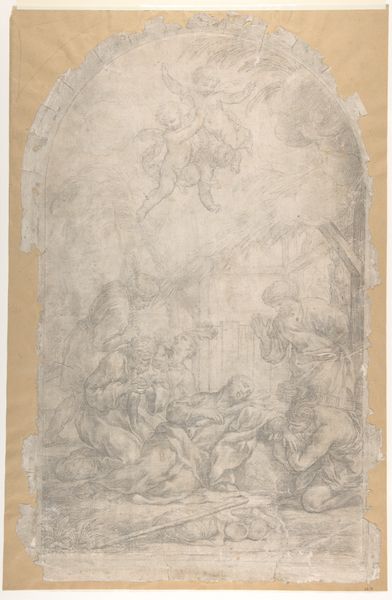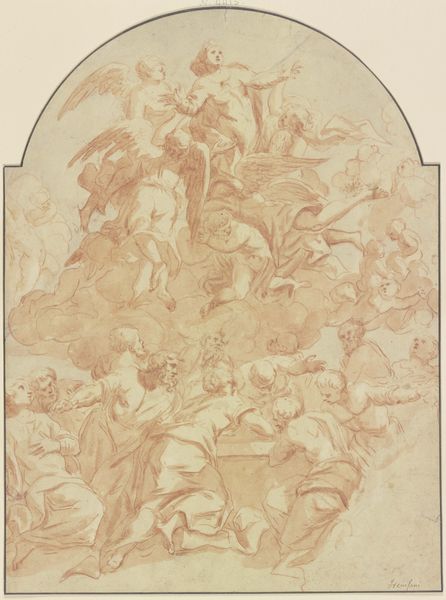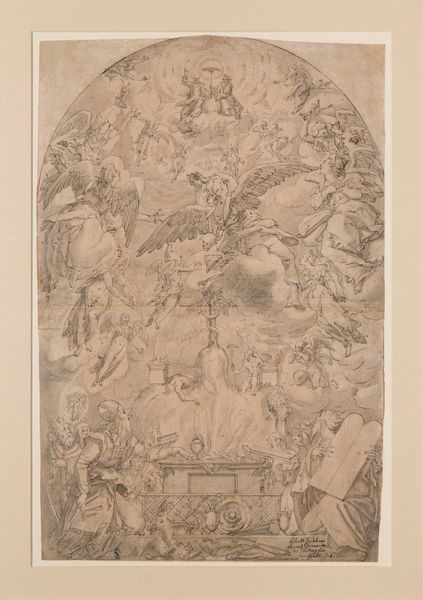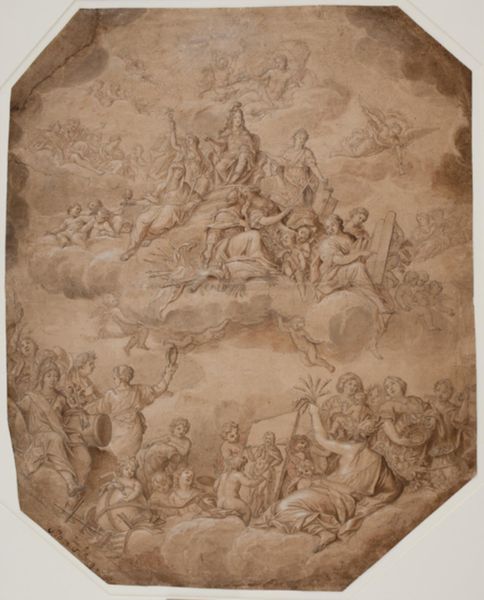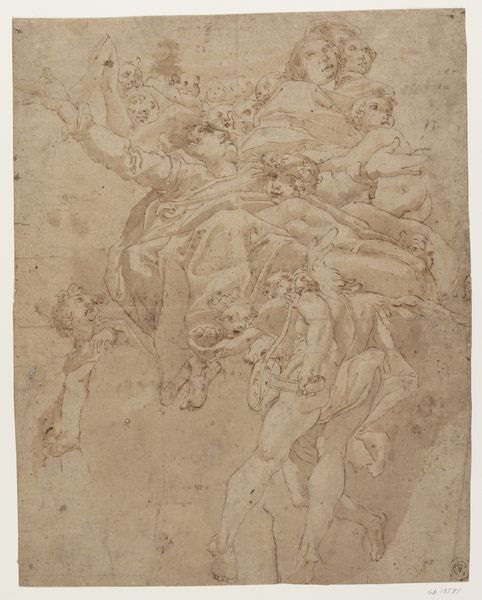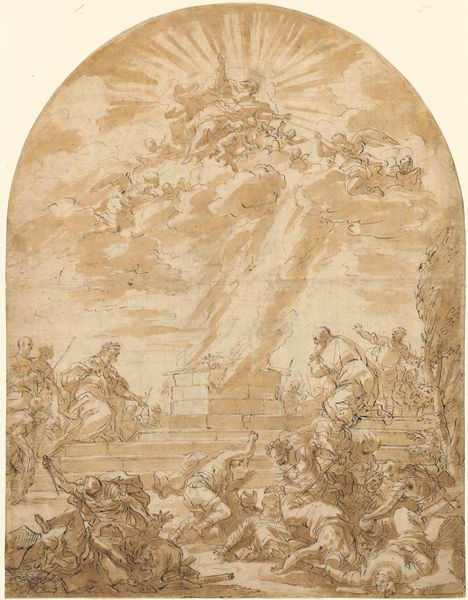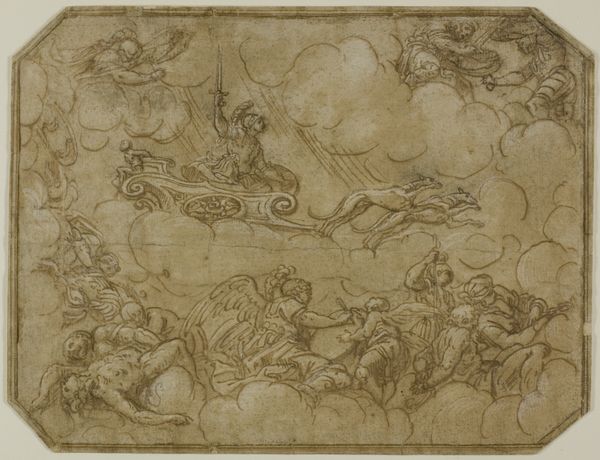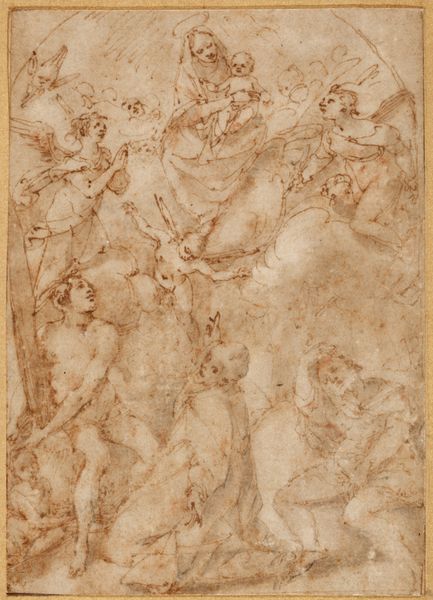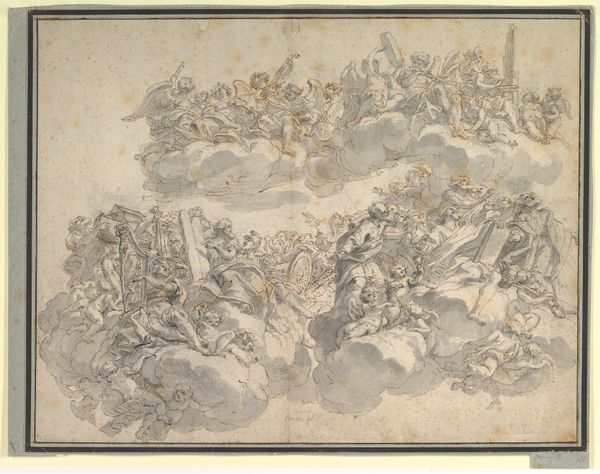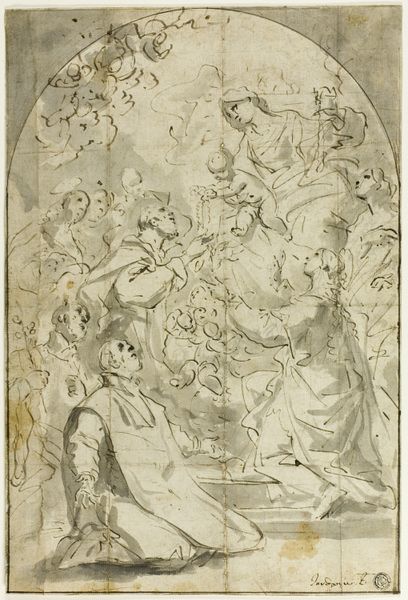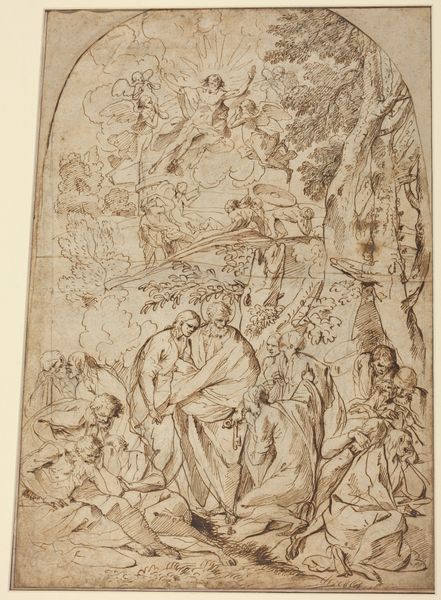
drawing, print, etching, paper, ink, pen
#
drawing
#
allegory
#
narrative-art
#
baroque
# print
#
etching
#
figuration
#
paper
#
ink
#
chiaroscuro
#
pen
#
history-painting
Dimensions: 315 × 275 mm
Copyright: Public Domain
Curator: This energetic drawing, housed here at The Art Institute of Chicago, captures “The Conversion of Saint Paul.” It's an ink and pen with etching on paper work by Francesco Solimena. Editor: The initial impression is quite arresting. There's a swirling vortex of bodies and horses, all rendered in sepia tones. The overall form is arched, lending a dynamic upwards motion, isn't it? A kind of baroque drama in monochrome. Curator: Precisely. Look at the composition. Solimena uses chiaroscuro masterfully, creating depth and highlighting key figures within the chaotic scene. The figures in the clouds and a beam of light emanating downward certainly punctuate the drama of it all. Editor: It certainly speaks to a larger visual tradition of religious epiphany. The radiant light is a classic motif indicating divine intervention, wouldn't you agree? Throughout the history of Christian art, that kind of image denotes a life-altering event, a symbolic death and rebirth. The figure tumbling off the horse... That’s obviously Paul? Curator: It is indeed Saul. Or Paul of Tarsus, depending on your view of history, pre and post Damascus Road! The surrounding soldiers all recoil, overwhelmed by the sudden and powerful display. From a purely structural perspective, their reactions amplify the centrality of Paul. Editor: Observe how those horses practically scream, echoing the panic, while that heavenly figure in the upper register bears resemblance to Jove. Classical allusion was a hallmark of baroque allegory, wasn't it? Pagan symbols become a method to visualize new faith. Curator: Absolutely. And the fact that this work is on paper affords it an intimacy, almost a sketch-like quality. Its lines carry immense vitality and a powerful tension which adds to the drama of the whole piece. Editor: Looking at it this way highlights not only a pivotal biblical narrative but also Solimena's grasp on cultural symbolism and its lasting power in how it affects us, doesn't it? Curator: And when seen through the lens of its visual components, the image also gains traction through dynamism, movement, and structure that holds together to amplify an event frozen in time for years. Editor: An exciting way to revisit the potency of symbolism in a very moving depiction, I feel.
Comments
No comments
Be the first to comment and join the conversation on the ultimate creative platform.
